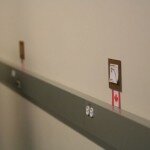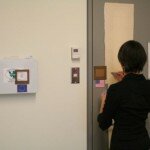One point that I try to drive home when talking to people about design research, especially “indy” research done at small businesses like Wyld Collective, is that research in our area doesn’t require incredibly costly or dangerous equipment. No linear accelerators or biohazards here. So we’re starting a series of blog posts, to be published here once every week or two, about our favorite tools under $100. And we mean legally obtainable for under $100. We will not be urging you to bittorrent CS6.
We’re kicking this series off with something very inexpensive. The item I’m writing about today is post-it glue, available from Staples for $2.04. I mean, obviously post-its are useful, everyone knows that. But not many people know that you can actually buy glue sticks that will let you turn anything into a post-it. Seriously, try it. It’s a little bit scary how satisfying it is to postitify all the arbitrary pieces of paper in your life. We found this stuff a little over a year ago, and have been using it since. Whenever we do any paper prototyping, it goes into heavy rotation.
The fun and challenge of sketching and prototyping is to craft something that’s at the proper resolution to teach you something. A prototype that looks too polished is liable to intimidate the person you’re asking to critique it; it looks too close to done, and suggestions for major changes would feel out of line. Anyway, too much detail too early is a waste of time, since you’re going to revise everything as you go. And yet, at least parts of your prototype need to be detailed enough to discern opportunities and problems, to imagine what it would be like in use. How much detail to include, and where to put it, depends a lot on what you’re trying to learn from the prototype. In my experience, you may need to include a convincing-looking animation in a prototype, even when everything else can look sketchy and wireframey, if (for example) you’re trying to figure out how a certain component can grab the user’s attention.
So the great thing about post-it glue is that it gives you unlimited ability to create removable and replaceable parts for your paper prototype while retaining just the look and feel you want. This helped us stretch the principles of paper prototyping to apply not just to conventional screen interfaces (though we do those, too), but to prototyping spatial and tangible interactions. If you’re testing, say, the playability of a scavenger-hunt type game, you can’t just sketch components onto a post-it and expect them to be legible from across the room… you want to print out something clear, clean and iconic and turn it into a post-it.
In the gallery below, you can see how we used post-it glue to fake a sequence of system actions and reactions scattered among many screens all around a room.






Today, with not much more than a 3D printer, a credit card, and an Internet connection, an aspiring entrepreneur can build a prototype on the desktop, ship off CAD drawings to get all of the parts built, and launch a business. Low-cost tools like MakerBots and Arduinos, membership-based prototyping facilities like TechShop, novel funding mechanisms like Kickstarter … all make building, manufacturing, and marketing a new product within the reach of any inventor.